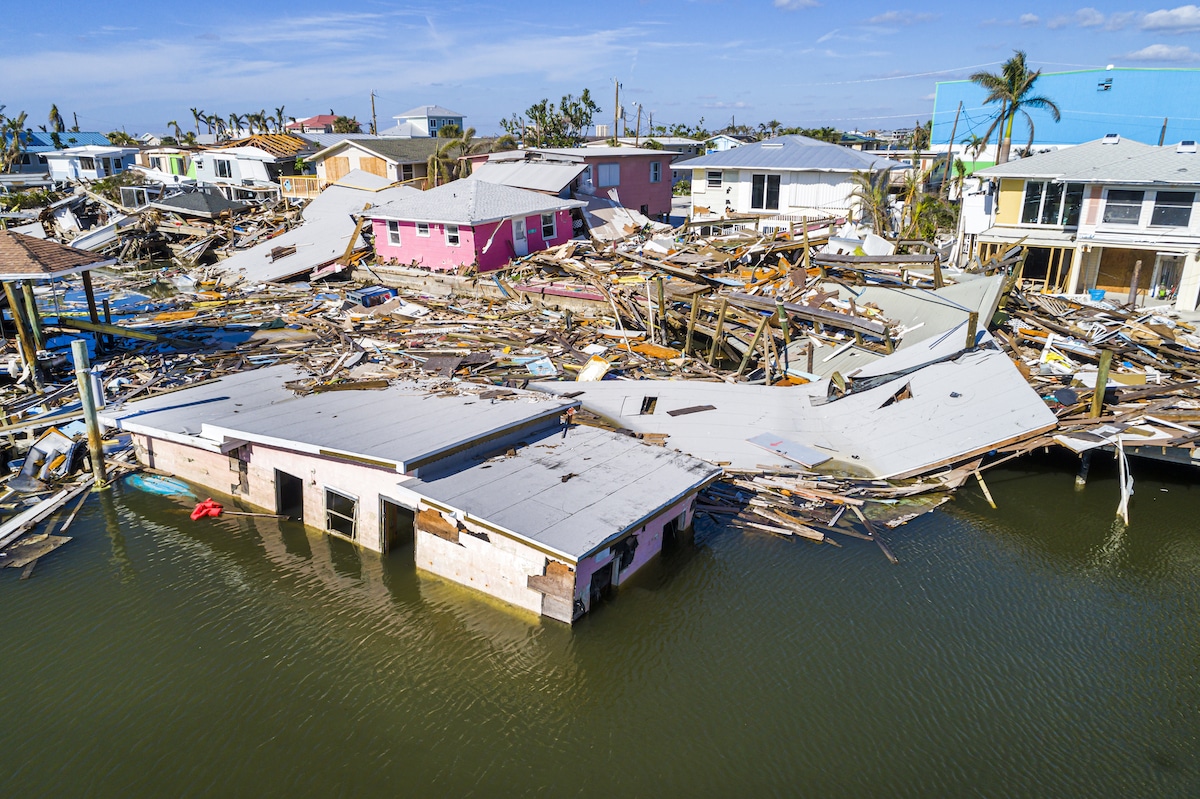Products You May Like
An aerial view of damaged property in Fort Myers Beach, Florida after Hurricane Ian, the costliest extreme weather event of 2022. Jeffrey Greenberg / Universal Images Group via Getty Images
 Why you can trust us
Why you can trust us
Founded in 2005 as an Ohio-based environmental newspaper, EcoWatch is a digital platform dedicated to publishing quality, science-based content on environmental issues, causes, and solutions.
In 2022, there were 10 climate-fueled extreme weather events that caused more than $3 billion worth of damage each.
That’s the disturbing conclusion of UK charity Christian Aid’s annual review of the year’s costliest and most destructive climate disasters, released December 27.
“Having ten separate climate disasters in the last year that each cost more than $3 billion points to the financial cost of inaction on the climate crisis,” Christian Aid CEO Patrick Watt said in a press release. “But behind the dollar figures lie millions of stories of human loss and suffering. Without major cuts in greenhouse gas emissions, this human and financial toll will only increase.”
The report, “Counting the Cost 2022: A Year of Climate Breakdown,” first listed the 10 costliest extreme weather disasters of the past year. The $3 billion floor is an escalation from 2021’s report, which listed 10 disasters that cost $1.5 billion or more.
The 2022 events were, in order of damage amount
- Hurricane Ian in the U.S. and Cuba: More than $100 billion.
- European drought: More than $20 billion.
- Flooding in China: More than $12.3 billion.
- Drought in China: More than $8.4 billion.
- Flooding in East Australia: More than $7.5 billion.
- Flooding in Pakistan: More than $5.6 billion.
- Storm Eunice in Europe and the UK: More than $4.3 billion.
- Drought in Brazil: More than $4 billion.
- Hurricane Fiona in the Caribbean and Canada: More than $3 billion.
- Flooding in South Africa: More than $3 billion.
However, while the report calculated costs, it noted that this method of ranking disasters — which typically focuses on insurance losses — tends to disproportionately highlight events in wealthier countries.
More From EcoWatch
“Economic impacts are always higher in absolute terms in high income countries — the economic value of infrastructure and homes tends to be higher, living costs are greater and more is covered by insurance — and therefore calculable — in financial terms. On the other hand, the death toll is usually higher in poorer countries,” the report authors wrote.
For example, the Pakistan floods were the sixth most expensive event on the list, but also the disaster with the highest human cost, The Guardian pointed out. The flooding killed 1,739 people and displaced seven million.
To account for climate impacts in poorer nations, the report also listed ten disasters that had a lower financial cost but a substantial human one.
These were:
- Drought in the Horn of Africa, which has impacted 36 million people.
- Flooding in West Africa, which killed more than 600 and displaced 1.3 million.
- Cyclone Sitrang in Bangladesh, which killed 35 people and displaced one million.
- Tropical storm Nalgae in the Philippines, which killed 162 people and displaced 850,000.
- Flooding in Malaysia, which killed 54 and displaced 70,000.
- Flooding in Brazil, which killed 231 and displaced 1,400.
- Storms in Southeast Africa that killed 366.
- A heat wave in India and Pakistan that killed at least 90.
- A wildfire in Tierra del Fuego, Chile.
- Heat waves in the Arctic and Antarctica.
In addition to listing disasters made worse by the climate crisis, the report also issued recommendations for preventing and adapting to future events. These included rapidly reducing greenhouse gas emissions, investing in the transition to renewable energy and ensuring that money flows from developed to developing countries to help them both transition away from fossil fuels and update their infrastructure in response to changing weather patterns.
The report also hailed the launch of a loss and damage fund at the most recent COP27 climate conference in Egypt, to pay for the inevitable impacts of climate change on poorer nations that did the least to contribute to it.
“The creation of the loss and damage fund at the COP27 climate summit was a huge breakthrough for people living on the front lines of this crisis,” Christian Aid climate justice policy advisor in Bangladesh Nushrat Chowdhury said in the press release. ”This report shows just how badly it is needed and the urgency with which we need to see it up and running. The people flooded in Pakistan or victims of Cyclone Sitrang in my country of Bangladesh need this support to rebuild their lives.”
Subscribe to get exclusive updates in our daily newsletter!
By signing up, you agree to the Terms of Use and Privacy Policy & to receive electronic communications from EcoWatch Media Group, which may include marketing promotions, advertisements and sponsored content.
